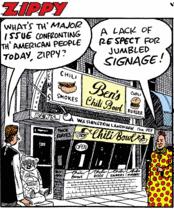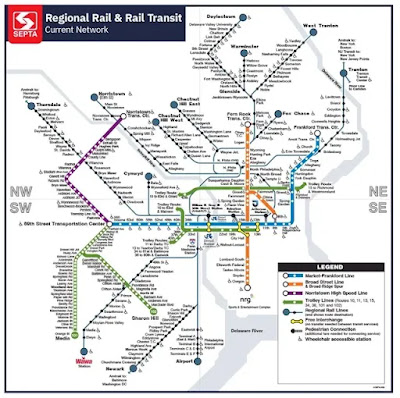Over the years, originally inspired by a "what you can do" list by Preservation Action Council of San Jose, I've developed a four-part series on what people can do to "celebrate" National Preservation Month. There are 60 items across the posts, ranging from visiting a historic district to watching a film in a historic theater.
Rather than reprint them in full--recognize that some of the links in previous pieces may be out of date--here are the entries.
-- "May is Historic Preservation Month: 60 ways to celebrate | Part 1: Cultural Heritage Tourism (1-19)," (2019)
1. Resources for Cultural Heritage Tourism Travel. Magazines like Southern Living, Yankee and Sunset. Bookstores. Visitor Centers. Historic preservation organizations. Local chapters of the American Institute of Architects, and sometimes the American Society of Landscape Architects. When traveling, library special collections.
2. Stay at a historic hotel in the city or a bed and breakfast located in a historic district. For example, the Tabard Inn in the Dupont Circle Historic District is one of the most romantic places in the city to have weekend brunch--out on the patio, during the spring, summer, and fall.
3. When you visit other places, check out how they deal with historic preservation matters, and share that learning when you come back. For example, every fall, Pasadena Heritage sponsors Craftsman Weekend, in honor of its bungalow heritage.
4. Don't forget to check out traditional commercial districts, antique shops, other stores, cinemas, theaters, concert halls, restaurants, historic cemeteries, etc. as a regular part of your travel itinerary.
5. Check out a historic library building/Central Library. Another great place to learn about a community when you're traveling is the main library. Some of the buildings are historic, others more recently are majestic new construction buildings very much worth visiting. .
6. Visit historic sites. Many people visit historic sites when traveling. Across the United States, ("The shortest route to America's 49603 historic sites," Washington Post) there are almost 90,000 places listed on the National Register of Historic Places.
7. Go see a museum exhibit relevant to urban history, even if it's on a seemingly broader topic. When people travel, and "consume" locally available museums, usually people's trips start and end with the local arts museum.
8. Walking and building tours. Many communities have organized walking tours for historic areas. Some print booklets for self-guided tours, many places have smartphone tour apps, and cities often have historic marker and trails programs.
9. Bicycle touring. Bikes are a great way to cover a lot of ground more quickly. And it's less tiring to bike than it is to walk. Many cities have bike rental operations (there is a loosely affiliated group called "Bike and Roll" operating in many cities). And some hotels and B&Bs make bicycles available to their guests. (There are even apps for renting bikes directly from individuals, like Spinlister, which can be cheaper than the bike rental places.)
10. Transit as a way to get around. While not many cities in the US do this, many European cities set up or promote specific transit services as a way to tour parts of the city, usually a set of tourist-oriented attractions in the core ("Travel around the city by tram," Visit Helsinki).
If you're already familiar with how to use transit, it usually isn't hard to figure out how to use another transit system. If you don't regularly ride transit, likely people will be happy to help you.
11. When we travel, we like to visit house museums. For example, the Woodford Mansion in Philadelphia is really cool, and Savannah has many different house museums that you can visit, the most notorious being the Mercer-Williams House. Most cities have at least one. Los Angeles has just reopened the Hollyhock House.
12. Arguably, "antiquing" which for me includes ephemera, can be a form of historical/historic preservation-related research and is deserving of a separate entry.
While traveling, you may wish to check out reclaimed building materials stores too. You'll probably have to do some digging to find such organizations, but offhand I know there are such places in New York City, DC (Suburban Maryland), Baltimore, Pittsburgh, Minneapolis, Detroit, York and Scranton, Pennsylvania, etc., plus the various Re:stores run by local affiliates of Habitat for Humanity.
13. Visit a historic railroad station, bus terminal and/or a transportation museum. There are many fabulous extant railroad stations, many no longer in use, in so many cities.2013 was the 100th anniversary of Grand Central Station in New York City, and in Chicago, Denver, and Los Angeles new master planning and/or construction improvement projects for stations in those cities are underway.
14. Visit a streetcar museum. Many communities have streetcar/transit museums such as the Baltimore Streetcar Museum and the National Capital Trolley Museum in Montgomery County, Maryland in this area. So try to ride a historic streetcar as well.
15. Ride a streetcar system in active service. Some places run heritage streetcars in active service. Everyone knows about the streetcars in New Orleans (and that system continues to expand in bits and pieces).
16. Tour a historic trail, road, railroad, canal, park network, or parkway/greenway.
17. Garden Tourism. Garden tourism has two different strands.
18. Ride a passenger rail train. Ride a passenger railroad (commuter) train. In the DC region, that means MARC or VRE. In Greater New York, New Jersey, Philadelphia (SEPTA), Chicago, and Boston (as well as Toronto and Montreal), Southern California, Northern California and elsewhere commuter railroads provide passenger rail services once provided by private railroad companies.
19. Visit a national or state park. DC, for obvious reasons, has many nationally owned parks, the system of Fort Circle Parks works to preserve the forts built during the Civil War to protect the city from Confederate invasion. Fort Stevens, hidden behind a church on Georgia Avenue, around Quackenbos Street NW, was attacked by Confederate forces, and President Lincoln was up there and watched. Up Georgia Avenue a bit, close to Walter Reed Hospital, is a somewhat forlorn and neglected battlefield cemetery and monument honoring soldiers who died at the battle at Fort Stevens.
20. Take a boat trip on a local river. Many cities have water-based tours or smaller scale water taxi systems. Boston, Seattle, New York City, and San Francisco have working passenger ferry systems. The Staten Island Ferry is working transit that's free.
-- "May is Historic Preservation Month: 60 ways to celebrate | Part 2: Explore your community (20-36)," (2019)
21. Explore an older area of your community that you don't know. Go on a neighborhood or building tour. Check out a talk (not all of them cost money) at the National Building Museum.
Or just walk around a neighborhood with housing built before 1930. Walking here and there around the core of Takoma Park, Maryland, we always come across attractive and unique houses.
22. Many preservation groups sponsor neighborhood house tours. On the first Sunday of May, Historic Takoma Park (DC and Maryland) has their annual house tour.
23. Follow the path of a Heritage Trail such as one of the many "produced" by CulturalTourismDC in DC.
24. Shop at stores in commercial districts that are historically designated: i.e., Cleveland Park; Georgetown; Capitol Hill; Dupont Circle in DC, but there are so many across the country.
 25. Eat in a restaurant in a historic building/historic district. Now 60+ years old, Ben's Chili Bowl is one of the few remaining restaurants in the city that is many decades old. .. Readers have pointed out that Martin's Tavern in Georgetown and Cafe Mozart, a German restaurant downtown, are much older.
25. Eat in a restaurant in a historic building/historic district. Now 60+ years old, Ben's Chili Bowl is one of the few remaining restaurants in the city that is many decades old. .. Readers have pointed out that Martin's Tavern in Georgetown and Cafe Mozart, a German restaurant downtown, are much older.
26. See a movie in a historic cinema building. There aren't many historic cinemas in DC proper any more, but the Uptown Theater in Cleveland Park is one.
27. See a production in a "legitimate" historic theatre or concert hall. You have many choices in the DC area such as the Warner, the National, the Studio Theatre, the Lincoln Theatre, the Shakespeare Theatre at the Landsburgh, the Atlas Performing Arts Center (which utilized federal historic preservation tax credits to pay for a portion of the building's rehabilitation), or the DAR Concert Hall.
28. Even if you're an atheist, it can be fun to visit a historic church building, including checking out their stained glass windows (I am a big fan of stained glass).
29. Shop at a historic public food market. Eastern Market is DC's last remaining public food market building, built in 1873. (Union Market is privately owned, and was constructed in the 1970s.)
30. Visit a historic cemetery. In DC, we have the Congressional Cemetery or the Rock Creek Church Cemetery at St. Paul's Episcopal Church, among others. Brooklyn's Greenwood Cemetery is a standout. Some cemeteries offer tours.
31. Check out an exhibit at a local history museum or historic site, such as at the Anacostia Community Museum or the Historical Society of Washington or one of the other house museums and historic sites in the city and region.
32. Walk the historic grounds of a local college or university. In DC, Catholic University, Trinity, Georgetown, Howard, and Gallaudet have beautiful grounds and buildings. Kendall Green at Gallaudet was designed by Frederick Law Olmsted.
33. Check out a monument or memorial in your community and learn more about it. We can't preserve what we don't understand or appreciate.
34. Visit a historic railroad or bus station, such as DC's Union Station. Designed by Daniel Burnham, it's an incredible example of the City Beautiful architectural movement. Check out chapters from Bill Wright's dissertation on Union Station. He's a great writer!
Railroad stations tend to be grand while older bus stations tend to be gnarly, which is an interesting commentary on the place of these respective modes in transportation history and practice.
35. Check out a historic library building. Many cities have great library buildings that now qualify as historic. A number of DC's libraries were built with support from the Carnegie Foundation (Northeast, Southeast, the old Carnegie Library downtown, Takoma, and Mount Pleasant, which is particularly gorgeous) as were more than 2,000 other libraries elsewhere in the US.
36. Take a boat trip on a local river. The pontoon boat tours of the Anacostia River leaving from the Bladensburg Waterfront Park (in Prince George's County) dip into DC. Many cities have water-based tours or smaller scale water taxi systems as well.
37. Explore historic preservation matters in your region, beyond the borders of your community.
-- "May is Historic Preservation Month: 60 ways to celebrate | Part 3: Learn and Get Involved (37-52)," (2019)
38. Learn about the history of your community. For example, for DC, read Dream City: Race, Power, and the Decline of Washington, D.C., 1964 -1994 and Between Justice and Beauty, and more.
39. Become a member of your citywide/countywide/regional preservation organizations such as the DC Preservation League, the Municipal Arts Society in New York City, Baltimore Preservation, Historic Districts Council in New York City, Cleveland Restoration Society, Preservation Resource Center of New Orleans, Landmark Society of Western New York (which serves Rochester, among other places), etc. I am a big fan of the Chicago Bungalow Association.
40. Before you get too involved, you might want to take the time to read your city, county, or state historic preservation plan. This will educate you about preservation issues in your area. (Although generally such plans are pretty positive, and don't go into enough detail about the "threats" nor do they outline ways to address "opportunities" in a process design approach.)
41. Learn about why historic preservation is important, in and of itself, as well as a urban revitalization strategy. The reason I am a strong supporter of preservation is that I have come to believe that it is the only approach to economically sustainable neighborhood and commercial district revitalization that works for the long haul.
42. Join a neighborhood/local preservation group, such as in DC the Capitol Hill Restoration Society, Historic Takoma, or Historic Mount Pleasant).
43. Nationally, you can join the National Trust for Historic Preservation while you're at it. If you join, you can visit NT owned sites and affiliate organization museums at a discount/free, get discounts at Historic Hotels, and discounts on products you purchase.
44. Preservation Action is a 501(c)4 advocacy group that advocates for specific legislation and is also a membership group. Their "Preservation Advocacy Week" is held in March, where members lobby Members of Congress for legislation favorable to preservation.
45. At the state level, most states have statewide preservation organizations. In the DC-VA-MD area, that means Preservation Maryland and Preservation Virginia/Association for the Preservation of Virginia Antiquities, as well as the DC Preservation League. Many sponsor annual or bi-annual conferences, journals, and other provide other resources.
46. Volunteer/1. Get involved in a preservation issue in your neighborhood or the city-county at large, which could include attending meetings of your local historic district/preservation commission, which in DC is the Historic Preservation Review Board, or working on a particular project affecting your neighborhood or city.
47. Volunteer/2, in a traditional commercial district revitalization initiative, at a history museum, or for a historic site. A "division of the preservation movement" is the Main Street commercial district revitalization program, which links economic development with historic preservation focused on the revival of local commercial districts and downtowns in smaller communities.
48. Volunteer/3, at a history museum, a historic park or at a historic site. Museums and historic sites are always looking for volunteers, as our most park systems, including the National Park Service. Many docents at sites and museums are volunteers.
-- Volunteer in Parks program, National Park Service
49. Work to preserve historic schools as schools. The DC Public School system has an archives and museum that is also a meeting center, Sumner School, at 17th and M Streets NW.
50. Another way to learn a lot but very quickly is to attend a preservation conference such as the annual meeting of the National Trust for Historic Preservation (this year it's in Denver starting October 10th) and the National Main Street conference, which was held in Seattle in March, some sessions materials are available).
51. Check out the history resources at your local library or a specialized collection such as in DC at the Washingtoniana Collection at the Martin Luther King Central Library or the Peabody collection at the Georgetown Branch, the Kiplinger Library at the Historical Society of Washington, the Jewish Historical Society, or the Moorland-Spingarn Collection at Howard University. Many city libraries have history collections.
52. Read a historic district brochure (or historic building or district nomination form). In DC, they are available online or in hard copy at the Historic Preservation Office. Many communities produce and publish these kinds of publications. Two of the best I've ever read is one on Jefferson County Indiana including Madison (One of the first Main Street communities) and Hanover, and the other on the Kansas City public market, called City Market. Both lay out their respective histories chronologically but thematically.
53. I am a big fan of reading the design guidelines publications produced for cities or neighborhood historic districts, which describe local historic districts, such as those from Montgomery County Maryland, Richmond, Virginia, Roanoke, Virginia, and the Philadelphia Rowhouse Manual. The Roanoke Virginia Residential Pattern Book is a stand out!
54. Listen to a preservation focused podcast. Podcasts--"radio shows" are a new addition to preservation-based media. Preservation Maryland produces a great series, PreserveCast, which is worth checking out.
-- "May is Historic Preservation Month: 60 ways to celebrate | Part 4: Preservation At Home (53-60)," (2019)
55. If you own "an old house," and want to learn more about historically sympathetic renovation, why not subscribe to relevant magazines such as Old House Journal, Old House Interiors, American Bungalow, This Old House, Fine Homebuilding, etc.
56. Publications on maintenance of historic houses.
57. Books to guide renovation.
58. Parts and appliance resources. There are companies that specialize in "historic" parts. For example, DEA Bathroom Machineries specialize in bathrooms, especially historic sinks.
59. Most big cities have architectural salvage stores, for example in the DC area, it's Community Forklift. In Baltimore, Loading Dock is a non-profit while Second Chance is a for profit.
60. Workshops and expos. It would be logical to have "Preservation Expos" during Preservation Month but it doesn't seem to be the case. Historic Chicago Bungalow Association holds workshops most months, and has building expos too, from time to time.
61. Activities for and with children. If you have children in your life, how about doing an activity with them that is architecture-preservation related?
62. Television programming. There are some HGTV/DIY network shows that are sympathetic to historic preservation, although the bulk of the shows are not. Even the heralded "Fixer Upper," even if they renovate vacant houses, tends to homogenize the interior of a house into a gargantuan "open concept" house with a massive kitchen.
But shows like "Rehab Attic," to some extent "Stone House Revival," and "American Rehab: Charleston" generally are pretty empathetic on historic preservation and can be a great source of ideas. Lately I've been enamored by "Restored," featuring Brett Waterman working on houses in Riverside County, California.
Obviously, "This Old House," on PBS is the grand-daddy of all shows. In my opinion, it's great for historic architecture and detailing, but the program tends to be more about supersizing houses, but doing a great job while you're doing so. And they seem to let it slide when homeowners make decisions that somewhat cavalierly rip out historic elements in favor of modernization.
63. Researching the history of your house. There are people who will research this for you, but many city libraries have usable information and even may offer seminars on how to go about this. Census records are one place, but more current records aren't accessible.
-- How to Research the History of Your House | This Old House
-- Internet Public Library: Research the History of Your House
-- Houses - The National Archives
Labels: cultural heritage/tourism, cultural planning, historic preservation, land use planning, transportation history, urban design/placemaking, urban history



.jfif)










.jfif)
.webp)
.webp)
.webp)








.jfif)


